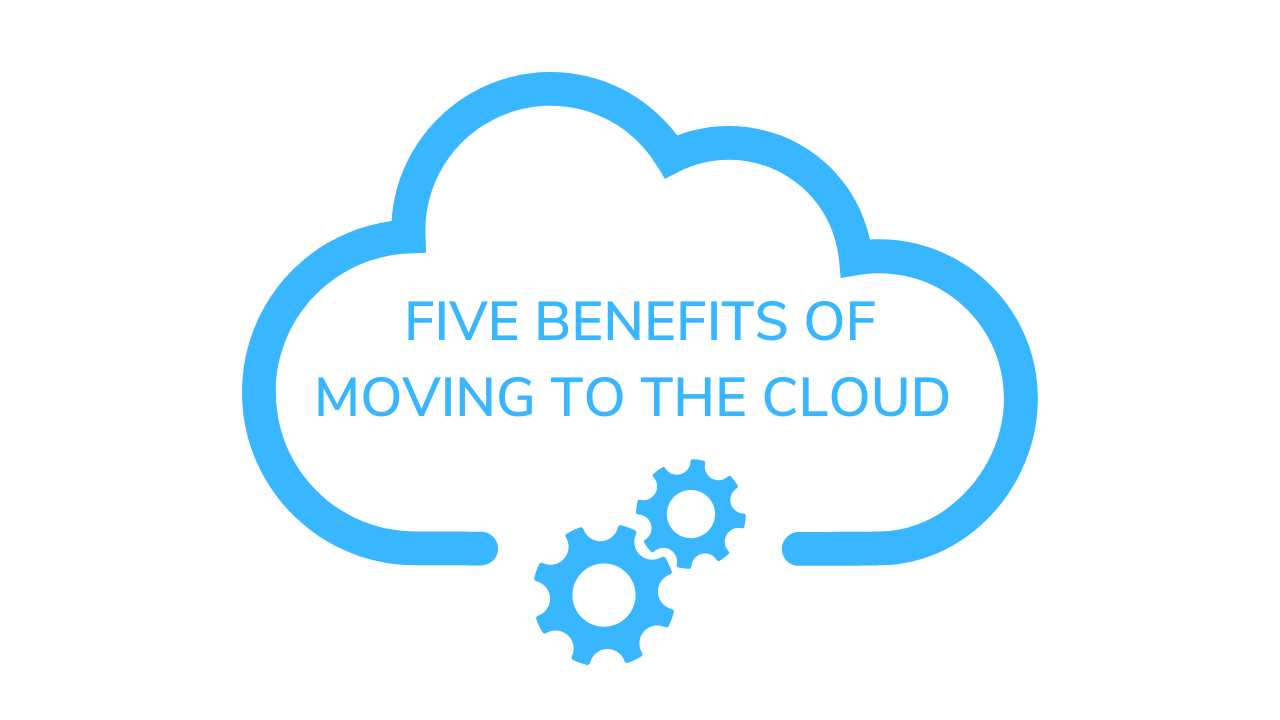Cloud Computing in a Nutshell
As more organizations shifts towards a cloud-first approach it is important to understand what the various cloud computing terms mean.

I'm not going to lie - the first time I heard the term 'cloud computing' I was completely confused. Not with the concept - but with the logistics of it all. (I'm still amazed that there is data all around us transmitting wirelessly from one system to another.)
cloud com·put·ing (noun)
"The practice of using a network of remote servers hosted on the internet to store, manage, and process data, rather than a local server or a personal computer." ~Oxford Dictionary
While cloud computing in its literal sense has only been around for about 20 years or so. The concept behind renting or purchasing infrastructure from a service provider has been around since the mid 60's. Back then, setting up a data center was incredibly costly so computer bureaus would allow companies to rent time on their mainframes. That same model is really what cloud computing is all about. Someone else sets up, and maintains the infrastructure and then offers a portion of as a service to organizations.
Cloud Computing Types
Public Cloud
A public cloud offers hardware, software, and supporting infrastructure as a service to a wide number of consumers/businesses over the internet. Public cloud services are accessed and shared by multiple organizations and can be thought of similar to a shopping mall where tenants rent space. The general facilities, including security, power, storage space, etc. are all taken care of by the property manager and depending on needs, tenants can rent kiosks, small spaces, or anchor stores.
Public clouds are offered by a number of providers around the world. Although the biggest players in the market today are Microsoft Azure, Amazon Web Services, and Google Cloud Platform.
Side Note: You may have come across the term multi-tenancy in some of your contracts or technical specification documents. This describes multiple customers accessing the same server at the same time. Healthcare organizations will often include specific rules or guidelines that cloud service providers need to follow with respect to multi-tenancy. (You're likely to come across this for both public and hybrid clouds.)
Private Cloud
Private clouds offer similar services to their public counterparts but they are used exclusively by a single business or organization. (I like to think of it as if I was renting a very well maintained house.) Now ... while public clouds are off-site in large remote data centres, technically a private cloud could be on site. Depending heavily on the scale of services, and the nature of the agreement.
Private clouds are not maintained over the general internet but rather on a private network that has privacy and security components set up for the client being served. Private clouds are quite common in healthcare, especially for some of the larger, multi-state organizations.
Hybrid Cloud
I'm pretty sure you can guess where hybrid clouds fall in the mix. 😊 They are exactly what they seem to be ... a combination of public and private. As healthcare organizations work on interoperability projects and take steps to provide access to some of their applications to patients and partner organizations, they often leverage the flexibility of hybrid cloud infrastructure. There are more deployment options with a hybrid set up, allowing you to set up some applications for access only on the network (e.g. EHR), while others are available over the internet (e.g. patient scheduling app).
Community Cloud
The final type of cloud computing service is one that is gaining more traction in healthcare over the past few year. Community cloud options are a type of hybrid, but instead of having the public portion, they have cloud infrastructure that is shared by a collaborative group of resources. This group is often made up of organizations within a common geographic region, or those within a shared industry who have common regulatory and/or service interests. For example, healthcare organizations are all required to meet certain privacy and security criteria to ensure that PHI is protected. They also have very similar disaster recovery and availability needs. Offering cloud infrastructure to these collective groups makes sense and allows them to spread the cost of higher services between them.
Cloud Computing Services
Infrastructure as a Service (IaaS) - Involves renting IT infrastructure from a cloud service provider. This may be all components of the infrastructure (e.g. servers, storage, networks, etc.), or just a portion. (For example, long term storage.) IaaS is usually pay-as-you-go allowing for greater flexibility.
Platform as a Service (PaaS) - The provision of a complete software platform, including database, middleware, security, operating system, development tools, etc. from a service provider. PaaS models are used primarily as on-demand environments for developing custom applications. An example of a common PaaS used in healthcare is Red Hat Openshift.
Software as a Service (SaaS) - This service model is the complete provision of an application delivered to a customer/business using a subscription model. The service provider manages all aspects of the environment, including infrastructure, application layer, and any required maintenance. As healthcare organizations start to connect with more patient-centric/consumer-based applications, we are seeing more and more of this service model. Some common examples include Teladoc's telemedicine platform and the Salesforce Healthcare CRM SaaS offering.

- One of the biggest drivers for movement to the cloud is cost. Setting up and maintaining a full data center is very expensive and with cloud-hosted infrastructure it's possible to split some of the significant overhead costs with other organizations/companies. For example, facility cost, security personnel, etc.
- Cloud services can help with some of the interoperability challenges within the healthcare industry as well. By hosting applications on secure networks or over the general internet, it's possible for other key stakeholder groups to access the data without much burden. (Provider and patient portals are a great example of this.)
- Cloud service providers need to maintain their data centres with the 'latest and greatest' technology offerings in order to stay competitive in the market. This benefits their customer base by providing increased performance over what may have been present in an on-premise data center. UpTime and disaster recovery elements are also typically improved with a cloud-hosted solution.
- Another significant benefit of moving to the cloud is an increase in the productivity for database analysts, systems engineers, and other technical staff within the IT department. With self-managed on-premise data centres, there is a significant amount of time spent on tasks such as 'racking and stacking' that are simply no longer needed when you move to the cloud. This frees up valuable resource time so these highly skilled individuals can focus on more value-add tasks within the department.
- The last benefit I will mention is one that often generates quite a bit of conversation. Especially in the healthcare space. Cloud service providers are contracted to be continuously up to date on the latest and greatest security offerings. For most cloud-service contracts there is also some element of continuous monitoring for breaches, vulnerabilities, etc. With the rapid pace of change in the tech industry, it's often difficult for an organization to keep up with all the privacy and security requirements in an on-premise self-managed data centre. It should be noted that this was one of the significant drivers that lead to the development of community clouds.

